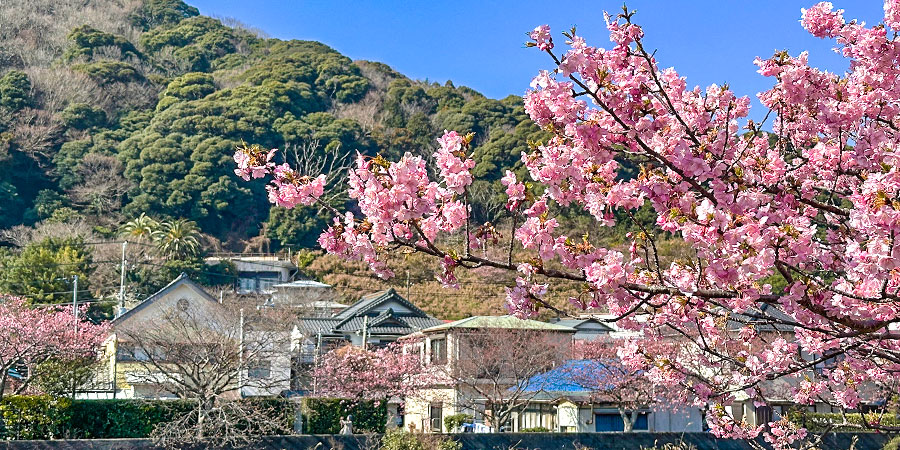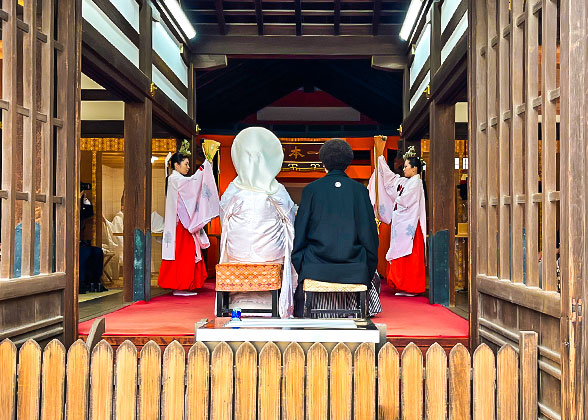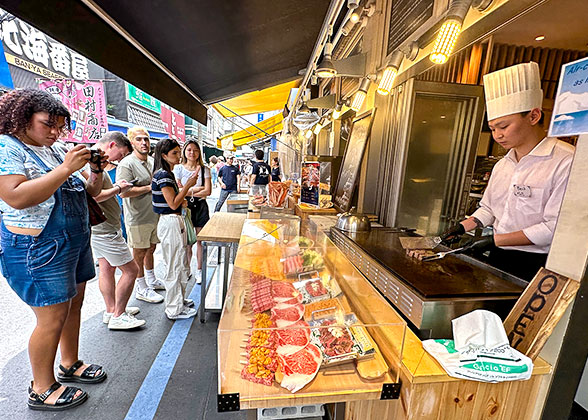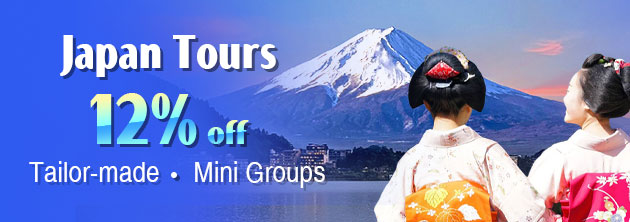Saga Attractions
Situated in southwestern Japan, Saga has a totally different vibe compared with those metropolises and popular travel destinations like Tokyo and Kyoto. It makes you believe that except for those neon lights, skyscrapers, and crowded modern malls, Japan has another side. Saga faithfully shows tourists a slow-paced, and more down-to-earth Japan. If you have been to those most famous spots in Japan or you want to calm down and enjoy some leisurely time, Saga may be your best choice.Saga used to be the birthplace and trade center of porcelain. Also, during your trip, it’s highly recommended to try Saga beef, which tastes just as good as Kobe beef but costs much less.
To visit Saga, you are advised to spare two or three days.

Cherry Blossom Sightseeing in Saga
|
What to See in Downtown Saga:
Saga Castle History Museum:
The main building of Saga Castle History Museum is the largest renovated wooden construction in Japan. The original castle was built in the 16th century but destroyed in 1873 because of the war fire. It has gone through many times of restoration. In 2001, the ruins were transformed to a museum to display traditional Japanese architecture and historical materials of Saga. English audio guide is available.Saga City Observation Deck:
Saga City Hall opens its top floor for the public to overlook the whole Saga City. Take the elevator to the 11th floor, and you’ll get to the observation deck, where you can see almost all the landmarks of Saga City. The observation deck is not closed till 10 PM.Saga-jinja Shrine and Matsubara-jinja Shrine:
When you are visiting Saga City, remember to drop by these two shrines. It’s great and effortless to visit them at the same time for the close distance between. They’re both built for important persons in Saga history. You can feel the peaceful vibe from the slow-paced brook and koi fish in the shrines.

Saga International Balloon Fiesta
|
Saga International Balloon Fiesta:
As the biggest balloon fiesta in Asia, it starts in late October along the Kase River, and teams from all over the world will participate in it. Participants fly balloons to get as close to the markers they put before as possible. Balloons will float at a very low height in this process. Competitions are usually held in the morning or at dusk. Seeing more than 100 colorful hot air balloons floating in the sky is quite astonishing and exciting.If you want to know more about the fiesta, then come to Saga Balloon Museum after paying 500 JPY. It displays information about different balloon festivals and videos of Saga Balloon Festivals.
Attractions in Southern Saga:
Southern Saga mainly including Kashima, Ureshino and Takeo is famous for hot springs and torii gates in the sea. You’ll learn more about Saga’s culture and living styles in this region.Yutoku Inari Jinja Shrine:
Yutoku Inari Jinja Shrine is one of the three largest Inari Jinja Shrines in Japan. The other two are respectively in Kyoto and Ibaraki. This ancient red shrine complex attracts about 3 million people every year. In the past, people came here mainly to pray for a harvest year. But now, the shrine also responds to wishes for a happy family, good revenues, and even traffic safety. It has lots of red torii gates, which are regarded as a symbol of energy and harvest.Oouo-jinja Shrine:
What’s most special about Oouo-jinja Shrine is the red torii in the sea. The three torii are standing in one line right in front of the shrine hall. When the tide is out, the torii will show themselves completely. The shrine attracts lots of photography fans every year. Besides, a lantern festival will be held around the shrine every August. People will write their wishes on the lanterns. At that time, you will see more than 500 lanterns on the beach.|
|
|
Takeo Onsen and Ureshino Onsen:
Takeo Onsen is a 1,300-year-old hot spring. It’s said that Miyamoto Musashi, a famous warrior in ancient Japan, had been to Takeo for the hot spring.Ureshino Onsen is considered one of the three largest hot springs in Japan that claim a fantastic function of tightening your skin because of the alkaline hot spring water, so it’s popular among women.
Mifuneyama Rakuen Garden:
Mifuneyama Rakuen Garden is located at the foot of Mt. Mifuneyama in Takeo City. It accommodates almost 500 statues of the disciples of Buddha and an authentic Japanese teahouse. If coming in spring, you can enjoy numerous cherry blossoms, azaleas, and plum blossoms.Where to Go in Western Saga:
Western part of Saga is mainly about porcelain, especially in Arita and Imari. It’s the best place for porcelain lovers to buy ceramic products and learn its history.Arita Ceramic Fair:
As the biggest ceramic fair in Japan, Arita Ceramic Fair is held every year during the golden week of Japan: April 29th to May 5th. Actually, the history of porcelain making in Arita can date back to around 400 years ago, when a kind of special clay was found here. Not long after that, in the 18th century, Arita porcelain was exported and gained popularity in Europe and the Middle East. Now the fair is the best place to buy first-class porcelain products at an attractive price in Japan.

Okawachiyama Village
|
Okawachiyama Village:
Okawachiyama Village is located in Imari City. It used to produce high-quality pottery for the Imperial Court and lords as a representative production center of porcelain. You can try designing and making pottery by yourself here.Kyushu Ceramic Museum:
If you are a porcelain lover, then you should not miss the Kyushu Ceramic Museum, which displays all kinds of ceramic products from different parts of Kyushu and of different times. Visitors will also learn more about the development of ceramics in Saga.Attractions in Northern Saga:
The most impressive part in Northern Sage is the historical place Karatsu. You can also enjoy the beautiful sea views in northern Saga.Karatsu Castle:
Karatsu Castle gained another name of “Maizuru Castle”, literally meaning “flying crane” because the curving coastline and pine trees, with the castle itself, together look like a crane spreading its wings. Visitors are recommended to enjoy the spectacular landscapes on the observation deck in the shrine of the castle, and they can also appreciate the traditional Japanese courtyards.Recommended Visit Route in Saga:
Day One: Saga arrival - Saga Castle History Museum - Saga Observation Deck - Try Saga beef -Saga Balloon MuseumDay Two: Yutoku Inari Jinja Shrine - Oouo-jinja Shrine - enjoy hot springs in Ureshino Onsen
Day Three: Shop around in Arita - Kyushu Ceramic Museum - Okawachiyama Village - Head to next destination




